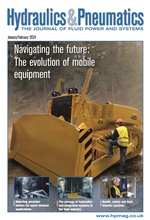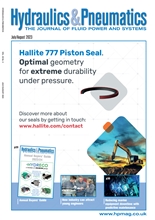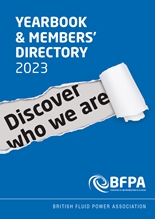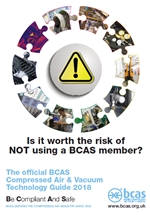- Home » Editorial » Hydraulics
Why the Minimess charging valve is the perfect partner for accumulator charging
Minimess is a testing point used primarily on hydraulic systems and carries a lifetime leak free guarantee. Its unique internal soft sealing poppet valve provides high-level performance and is widely used where high pressure (up to 630 bar working, 2600 bar burst), vibration or high temperatures are a feature of the system.
The poppet valve design, with 3 internal seals means that Minimess can be used on gas or air applications using a special version that is machined to very high quality internal surface finish tolerances, providing excellent gas tightness.
The most common use is as a charging and testing valve on accumulators up to 630 bar and are also used on fire suppression systems, gas calibrators and much more.
The test point thread design ensures a positive seal and safe connection/disconnection, even when system pressures are very high. When connecting our microbore hose to test or charge an accumulator there is no loss of system pressure or gas.
Correct charge pressures are imperative for accumulators to work correctly
If pre charge pressure are either too high or too low, this can cause operating problems or damage to accumulators. Below we have listed the common issues associated with over and under pressures on both Bladder and Piston type accumulators.
Pre-charge pressure too high (or reduction in system pressure)
With a piston accumulator, the piston will travel too close to the hydraulic end cap and the piston could bottom out, reducing output and eventually damaging the piston and piston seal. The piston can often be heard bottoming, warning of impending problems.
In a bladder accumulator the bladder can be driven into the poppet assembly when discharging. This could cause a fatigue failure of the poppet spring assembly, or even a pinched bladder. Excessive pre-charge pressure is the most common cause of bladder failure.
Pre-charge pressure is too low (or an increase in system pressure)
With no pre-charge in a piston accumulator, the piston will be driven into the gas end cap and will often remain there. Usually, a single contact will not cause any damage, but repeated impacts will eventually damage the piston and seal.
Conversely, for a bladder accumulator, too low or no pre-charge can have rapid and severe consequences. The bladder will be crushed into the top of the shell and can extrude into the gas stem and be punctured. One such cycle is sufficient to destroy a bladder. Overall, piston accumulators are generally more tolerant of incorrect pre-charging pressures.
Pre-charging too fast
If a bladder accumulator is charged too fast, high pressure nitrogen, expanding rapidly becomes cold and chills the bladder. The chilled, brittle rubber, expanding rapidly could potentially rupture. The bladder could also be forced under the poppet and torn.
Minimess charging systems provide a steady, safe testing & charging method and is the connection of choice for many service engineers.
-
Smart Manufacturing & Engineering Week
05 - 06 June, 2024
NEC, Birmingham -
HILLHEAD 2024
25 June, 2024, 9:00 - 27 June, 2024, 16:00
Hillhead Quarry, Buxton, Derbyshire UK










